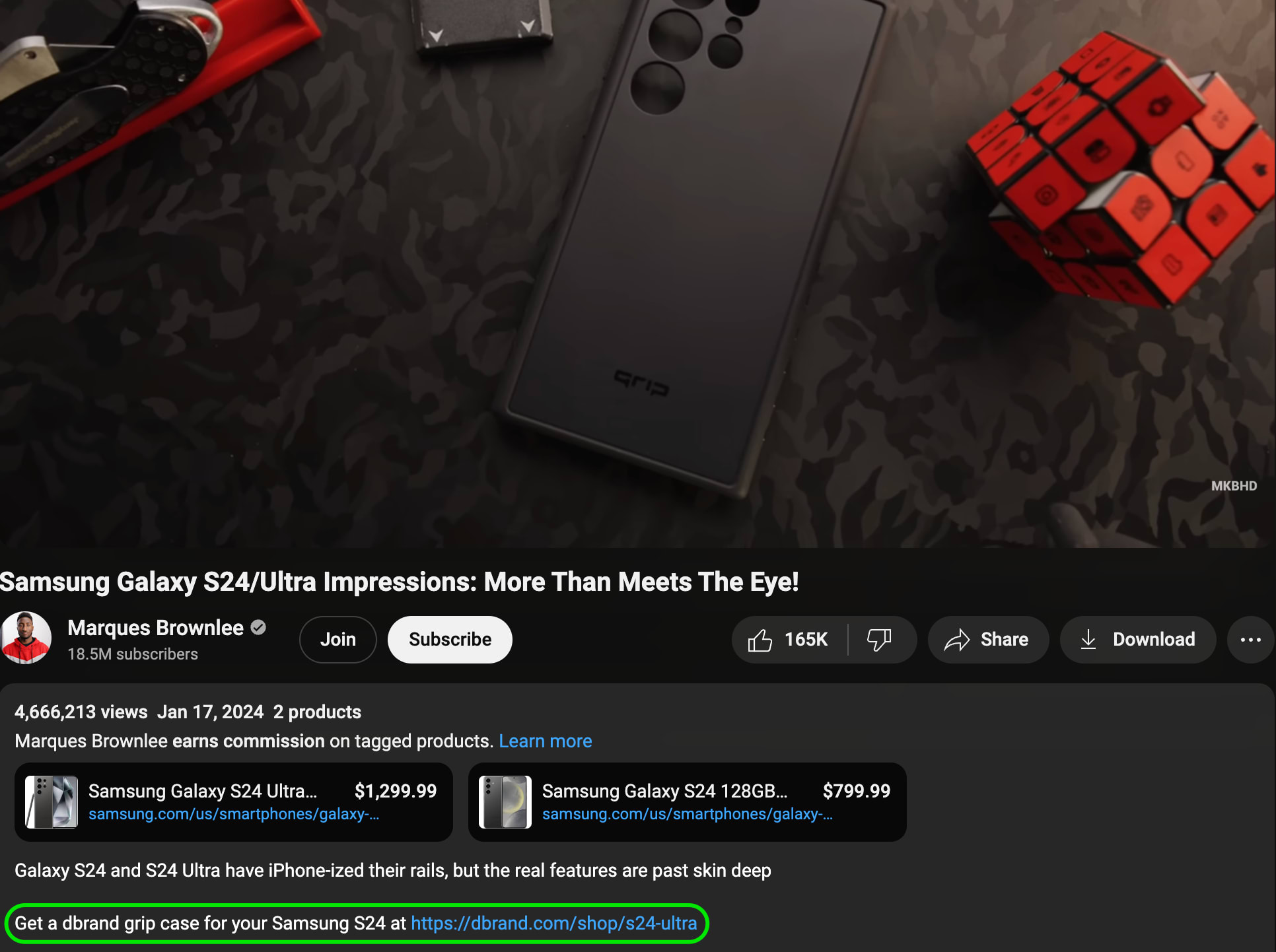How Much Does Affiliate Marketing Services Cost?
The average cost to run an affiliate marketing campaign is $600 to $20,000+. The price you’ll pay hangs on several factors. Keep reading to learn about affiliate marketing costs, payment models, benefits, and how to set up your affiliate program.
 March 20, 2024
March 20, 2024 13 minute reading
13 minute reading
You’ve been running your online business for a while and want to boost brand awareness or drive more sales.
You’re considering affiliate marketing probably because you heard more than half of marketers are using it up and down the purchase funnel and it’s got an ROI of $15 for every dollar spent.
But how much does affiliate marketing cost? And how do you set it up for your business?
Generally, affiliate marketing costs can range from $600 for a simple campaign to $20,000 and more for a comprehensive program. The price you’ll pay hangs on several factors, no matter the affiliate marketing program, affiliate partner, or commission structure you choose.
Here, we’ve put together a guide that shares everything you need to know about affiliate marketing services costs, so you can set a budget and pick the right setup for your needs.
How much does affiliate marketing cost?
We interviewed several affiliate marketers and pulled data from multiple sources to find out the average affiliate marketing cost for a typical program and what you can expect to pay potential affiliates.
Here’s a breakdown of the cost benchmarks.
Affiliate marketing website cost: $600-$10,000+
Domain name: $10-$20 annually
Website design:
Website builder: $7-$99 per month
Agency: $500-$50,000+
Freelancer: $61-80/hour ($100-$5,000 per project)
Hosting: $2-$200+ per month
Site maintenance: $400-$60,000 per year
Affiliate marketing materials: $5,000-$60,000+
Social networking and marketing tools: $10-$800 per month
Search engine optimization (SEO): $2,500-$10,000 per month
Paid ads: $1,250-$10,000 per month
Shareable creatives: $0-$2,000+ per month
Email templates: $100-$2,000 per design
Landing page creation: $0-2,000
Banner design: $50-$600+
Case studies: $300-$5,000+
Product descriptions: $50-$200 per product
Video content: $2,000-$50,000+ per project
Brand guide: $3,500-$10,000
Affiliate marketing program management software cost: $700+/year
Affiliate marketing software: $59-$240+ per month
Affiliate marketing commissions and payouts: 5%-30%
Below are average commission and/or payout rates (in percentages) based on:
Reach and engagement: 5% to 20%
Revenue-share tiers: 15% to 30%
Flat fee or revenue-share agreements: 15%
Sales commissions: 5%-25%
Performance-based influencer compensation: 5% to 20%
To help you know what to expect and how to budget, let’s look at how much you can expect to pay potential affiliates in terms of commissions and payouts.
How do affiliate marketers make money?
Affiliate marketers make money from commissions paid out through different payment structures.
For example, an affiliate shares their unique affiliate link on their blog, social media posts, or other channels that send people to buy your product. When shoppers click on the link, the affiliate will make a percentage of every sale that happens as a result of the clicks on their link.
Marques Brownlee, for example, earns affiliate commissions from Dbrand, which sponsors his MKBHD YouTube channel.

YouTube
Some affiliate marketers work in-house as company employees, managing brand affiliate marketing programs. This group of affiliate marketers earns an average salary of $$75,312 per year, according to Glassdoor. The total pay, including “additional pay” options like commission, cash bonus, tips, or profit sharing, ranges from $65K to $116K.
Now let’s discuss the average affiliate marketing commissions and payouts to give you an idea of what affiliate marketers’ earnings look like.
How much do brands pay affiliate marketers?
Brands spend a ton of money on affiliate marketing because it ties ad spend to actual sales and revenue.
But how much of their affiliate marketing budget goes to commissions and payouts? Well, that depends on the payment structure a brand uses.
For example, Madison Tong, ecommerce manager at My Supplement Store, says her company pays influencers based on reach, engagement rates, and specific campaign terms.
“They can range from a few hundred to several thousand dollars per post or campaign, or we structure it as commissions, such as a percentage of sales generated through affiliate links, typically ranging from 5% to 20%,” says Tong.
Let’s review some of the commonly used affiliate partner payment models.
1. Performance-based compensation
There’s a handful of ways brands pay affiliate partners using a performance-based model, such as:
Pay per click (PPC): Payment based on the number of clicks an affiliate’s unique link or promo code generates.
Pay per action (PPA): Paid when a user takes a specified action on a purchasing journey, like visiting a webpage, subscribing to an email list, or purchasing a product.
Pay per sale (PPS): Affiliate gets paid for every completed purchase—when a user buys or renews a subscription. “In B2B SaaS, the standard is per sale, paying out roughly 20% commission (in the first year or customer lifetime),” says Joe Kevens, director of demand generation at PartnerStack and the founder of B2B SaaS Reviews.
Pay per lead (PPL): Based on the number of qualified potential customers a brand gets from an affiliate’s marketing efforts.
Pay per call (PPCall): Payment based on the number of calls a brand receives based on the leads an affiliate generates.
Pay per installation (PPI): Payment based on the number of installs or downloads an affiliate generates.
“We typically pay affiliates based on the outcomes they drive, such as per click, lead, or sale,” says Alex Lirette, CEO at OrbitalSEO. “The amount we pay can vary depending on their reach, engagement rates, and niche relevance.”
2. Reward with revenue-share tiers
In a revenue-sharing model, affiliates earn a set commission, like 20% of an annual subscription fee, for every customer signup.
“We believe in rewarding influence authentically,” says Bradley Fry, owner of PinProsPlus. “Our affiliate partners are an extension of our brand family, so we avoid opaque CPCs or CPSs. Instead, we offer generous revenue-share tiers from 15-30% based on mutually agreed-upon KPIs and long-term success metrics. It's a true partnership, not a transaction.”
Mathias Johansen, co-founder and COO of Guide2Fluency prefers the revenue-sharing model only if the influencer's target audience is directly related to his business.
“Essentially, I will pay them 15% for every language-learning transaction they help drive so they’re really motivated to market our products and drive sales,” says Johansen.
You can also offer milestone rewards. These are tiered incentives where you give affiliates different incentives for each tier they clear. For instance, if the affiliate delivers 10 successful referrals, you can give them free branded merch, and if they get 15 referrals, a $100 gift card, and so on.
3. Flat fee
Brands that use a flat structure model pay affiliate partners a flat reward, like $100, for every customer signup.
ClickFunnels, for example, pays affiliates a flat recurring commission on a per-sale basis.
“Payments are made monthly, based directly on the sales they generate, and ClickFunnels offers a flat 30% recurring commission to affiliates for every active account referred,” says Laura Demetrious, communications director at ClickFunnels. “Affiliates earn on a per-sale basis, receiving monthly recurring payments for each active subscription they've introduced, which includes earnings from the free 14-day trial signups. This gives affiliates the opportunity to earn up to $89.10 per month for each active account that originated from the trial.”
4. Month-to-month reward
In this model, a brand splits its affiliates’ rewards into payments made at regular increments. For example, a Martech brand that sells email marketing software can pay its partners 20% per month for a one-year subscription instead of a lump sum for the entire year-long subscription.
5. Sales commissions
Payment based on commissions is one of the most popular models.
The commission rates you choose for your business will depend on your:
Budget
Industry niche
Partner program
“In B2B SaaS, the average commission payout is between 20-25%,” says Kevens. “We've found 24% to be the average commission rate among our top vendors.”
Other types of commissions include:
VIP commissions: For affiliates that bring more value to your business, like a blogger who reviews your products.
First sale bonus: Commissions paid for affiliate referrals.
Recurring commissions: Rewarded each time a customer pays subscription fees (weekly, monthly, or annually). It’s ideal for subscription-based affiliate programs, like SaaS and subscription-box. You can cap or limit based on conversions attributed to an affiliate.
Lifetime commissions: An affiliate gets a commission for the initial and subsequent conversions from a referred customer.
You’re not limited to just one payment structure. You can combine several payment models to boost sales and motivate your affiliates, which will mean setting a commission for each rewardable action.
⚡Pro tip: Need an effective and competent affiliate manager? Fiverr connects you to expert talent, including affiliate marketing professionals, who can recommend and implement the best payment structures for your business.
What are the benefits of affiliate marketing for businesses?
As consumers shifted towards digital platforms, brands invested heavily in social media and influencer marketing to reach their ideal audiences.
Affiliate marketing has emerged as a powerful way for brands to extend their reach and acquire new customers.
Here are several reasons why brands are investing in affiliate marketing:
Large pool of affiliates with varying skill sets
Affiliate marketing offers a wide range of affiliates with a pool of different skill sets you can leverage to attract different audiences and boost product sales.
Take Pair Eyewear, for example. The innovative direct-to-consumer (DTC) glasses brand sells customizable magnetic eyeglasses through affiliate marketing. Here’s an example from @DadChats, a Pair Eyewear influencer and affiliate.

TikTok
Get social proof
When consumers read or hear about your product from people they trust online, you get the social proof you need to boost sales and build customer trust and loyalty.
Stanley 1913 set up an affiliate marketing channel in partnership with The Buy Guide, resulting in heightened demand for its Quencher water bottle.

Stanley 1913 accessed new audiences through word-of-mouth recommendations, particularly women referring to other women. And consumers connected more directly with the brand, creating trust in the product and brand.
Growing social proof online further extended the brand’s reach on social media platforms, including TikTok, where the brand enjoys free publicity thanks to user-generated content (UGC).
Supplement promotional activities
Sharing affiliate product links with affiliate marketers enhances your marketing promos and generates buzz around your product.
Real-time online sales tracking
Affiliate marketing shows when a visitor clicks, links, and visits your website.
You can view and track the number of impressions, clicks, and affiliate sales to see how your affiliate marketing strategy generates online revenue.
Guaranteed returns
Affiliate marketing uses a performance-based payment model where the affiliate earns when they make a sale. It’s a cost-effective strategy since you set your commission rates and get guaranteed returns.
Plus, it increases average order value (AOV) and average customer revenue (ACR), providing a strong ROI.
It’s no wonder more enterprise brands, like Walmart, Abercrombie, and Target, are launching more affiliate programs with influencers, tying awareness-building to tangible marketing outcomes.
Business scalability
Affiliate marketers are your sales team, promoting your products or services, engaging with their audiences, and generating revenue for your business.
Affiliates also create brand awareness, which boosts site traffic, scaling your business online.
“We joined an affiliate network, in exchange for a cut of the profits, courting influencers and content producers who cared about visual storytelling,” says Andrew Cussens, the Owner of FilmFolk.
“And since we wanted to build relationships with others who cared about visual storytelling, we offered incentives—commissions—to every affiliate that referred us to a fresh lead. This recipe has helped us scale our extended network and scale our operations, cultivating a loyal and brand-literate fan base.”
Ready to set up a successful affiliate marketing business? Read on to learn how to get started.
5 steps to start an affiliate marketing program
1. Set your business goals
When setting up an affiliate marketing program, determine the following:
Target audience
Type of product or service you plan to sell
Affiliate program and payment structure
Potential affiliates aligned to your business goals
Then, set actionable and measurable goals based on:
Your projected revenue (monthly, quarterly, or yearly)
AOV and unique sales per affiliate
Clicks, impressions, and leads
Have several metrics in mind to easily measure your affiliate marketing program’s success.
2. Choose an affiliate program management solution
Depending on your business size, needs, and budget, you can either:
Start an affiliate program in-house
Join affiliate networks
Use an affiliate program management tool
If you have the time and budget to hire affiliate marketers in-house, set up an affiliate program. Small businesses with lean budgets can join an affiliate network, like ShareASale or Rakuten Advertising, or use an affiliate program management solution, like Refersion, Rewardful, and Tapfiliate.
3. Determine which products to offer
Decide what to promote, to whom, and through which affiliate. Not all have the right audience for your product. For example, Eddie Bauer is one of the top affiliates in the fashion industry, making it the go-to for brands in the fashion space. It wouldn’t make sense for it to collaborate with beauty influencers, for instance.
Whether you run a startup or an established business, do thorough research and stay on top of trends to decide what to sell.
4. Set affiliate commissions
Calculate the cost of acquiring new customers and making a profit, then add operating costs, like shipping and order fulfillment.
Physical products with high transaction fees often have lower commission payouts than digital products or services, which have no fulfillment costs, offering higher commissions.
Decide upfront whether you’ll pay commissions based on PPL, PPC, PPS, or other payment structures. This will determine the amount in commission you’ll pay your affiliates.
“On average, our affiliate marketing rates can range from $0.50 to $5 per click, or from 5% to 20% of the total sales generated,” says Lirette. “We believe in fair compensation and we are always open to negotiating rates based on individual circumstances and campaign goals.”
5. Establish an affiliate program policy and structure
Successful affiliate marketing programs follow a proper structure and have clear policies and performance requirements.
Your affiliate program policy and structure requirements should include the following elements:
Affiliate product categories allowed or excluded from your program
Your expectations on commissionable transactions per affiliate over a specified period
Allowable and restricted affiliate marketing channels, keywords, and tools
Affiliate link promotion and distribution
When and how payouts will be made to affiliates
How long affiliate cookies will remain active
Instances when affiliate action will be banned
Either create an affiliate marketing program policy and structure or use a performance marketing terms and conditions template and tweak it to your liking.
6. Choose an affiliate platform
As your affiliate network grows, you’ll need a system for communicating with partners, streamlining payments, and expanding your program.
There are many affiliate platforms available, but pick one that can:
Manage offers and partner commissions
Optimize digital marketing campaigns
Track and report campaign analytics
Detect fraud
Provide good customer support
7. Prepare affiliate marketing collateral
Affiliates need the right tools to promote your product or service, like shareable visuals, email templates, and banners.
Have a variety of ready-to-use and up-to-date online marketing materials and tutorials. This ensures affiliates have the best and relevant materials at all times and consistent brand messaging across platforms and channels.
Consider using apps to create your marketing materials. Or go to Fiverr and hire talented copywriters, graphic designers, or web designers and developers, to create high-quality collateral for your campaign.
8. Find the best affiliate partners
When choosing affiliates for your affiliate marketing program, look for partners with:
A platform with high-quality content
Clear guidelines on products or services they promote
Understanding of marketing, keyword research, and SEO
The right skills and experience
Good affiliate network and/or brand partnerships
Robust sales funnels
Shared or similar target audience/niche
Save on affiliate marketing costs with Fiverr
Affiliate marketing seems straightforward—pick a product to promote, choose an affiliate, and watch revenues roll in. But there are many moving parts to set up, monitor, and optimize.
To be successful, you’ll need the right affiliate partners for your affiliate marketing program.
Fiverr can connect you to a wide network of affiliate marketing professionals, no matter your niche or budget. To top it off, you’ll get a single dashboard to manage all your affiliates, projects, and finances—for free.
Sign up to Fiverr today to find and work with affiliate partners for your next campaign.



